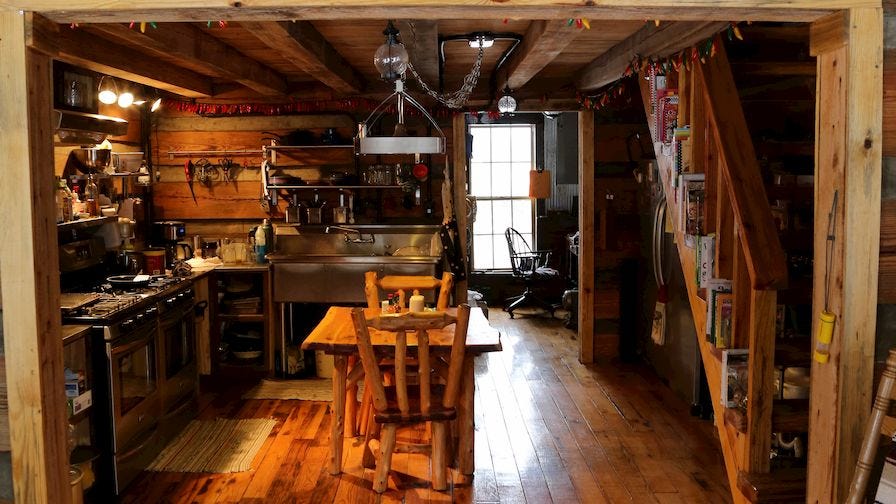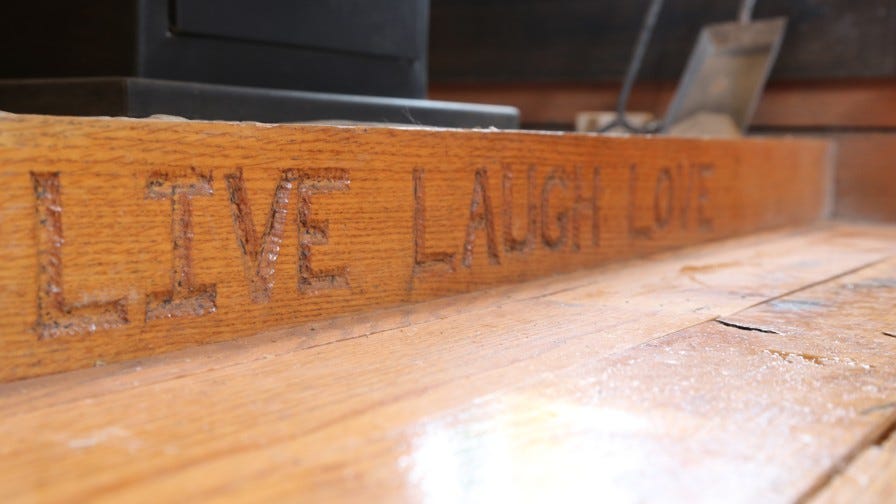Building a Cabin with a Portable Sawmill
By Wood-Mizer, Canada

“I went to the woods because I wished to live deliberately, to front only the essential facts of life, and see if I could not learn what it had to teach, and not, when I came to die, discover that I had not lived.” - Henry David Thoreau
The world is still dark when I wake. There is only the faintest hint of red on the eastern horizon as I flip on the lights of the cabin. It’s cold outside. As daylight begins to emerge, the greyness of early morning is reflected on the frost that covers our world. I slowly make my way down the stairs to add wood to the stove and pour myself a cup of coffee. My wife, Paula, is already up getting ready for school with bacon and eggs frying on the stove. After breakfast, we say our goodbyes as she heads off to teach her students and I walk down the hill to the shed and get on my tractor to go feed cows before I also head to my day job.
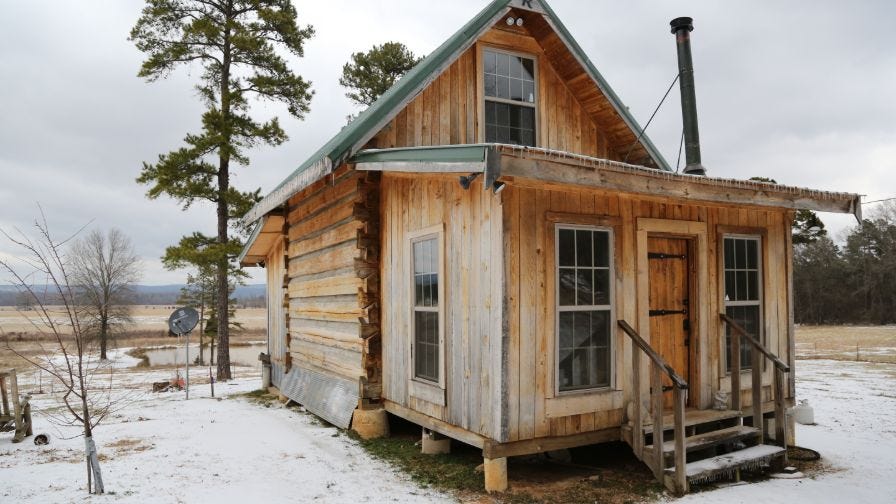

By now, the sun is breaking over the horizon and a plume of smoke is rising from the flue. The world is waking up. The horses are kicking their feed buckets and nickering for my attention. The heifers, seeing me out, start working their way to their feed troughs. On most mornings, I can see a dozen or so deer grazing in our hay field below the cabin. I set my coffee mug into its holder as I crank the tractor to life.
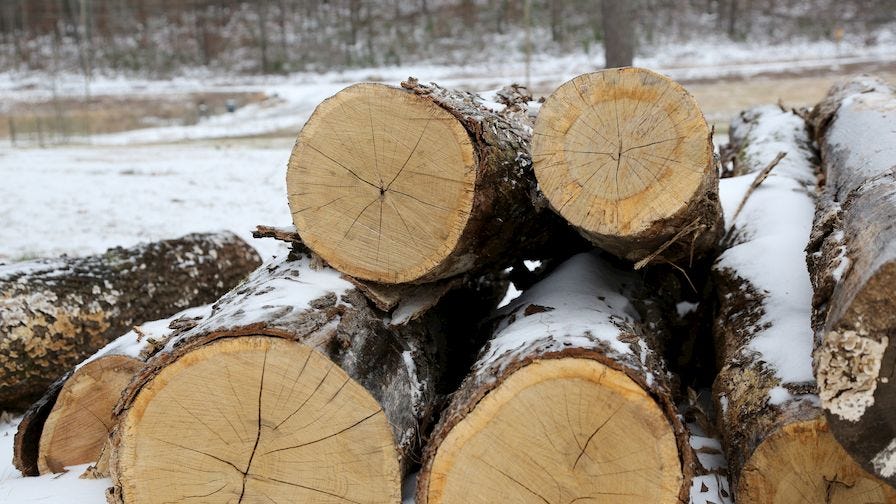

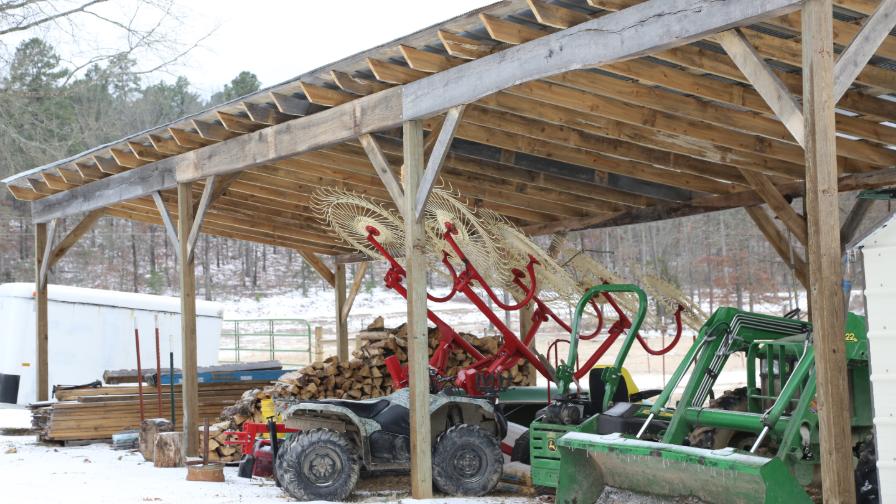

This is our life. It’s a good life. It’s a life we worked hard to have. The financial crash of 2008 hit a little too close to home. Watching so many others lose their life savings and homes as the result of a financial system out of control, we realized how close we came to being part of that statistic.It was then that we decided we would choose a different life. A simple life. A good life. We wanted to invest in things that matter and get away from the things that offered an illusion of security and nothing more. We wanted to be self-reliant. But money was tight. We had a couple of things going for us.
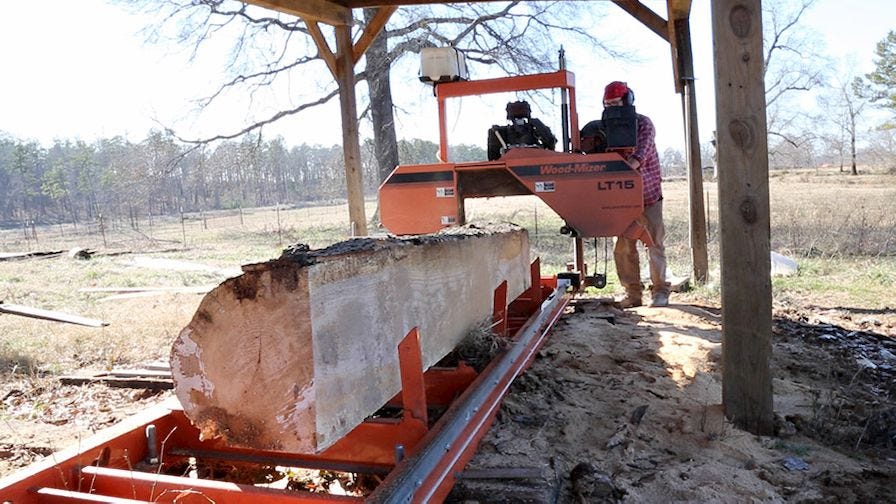

A year earlier, I had purchased a Wood-Mizer LT15 sawmill to mill lumber for repairs around the farm and we had a plot of land that was mortgage free. But with it feeling like the world was falling apart around us, we decided to do what it takes to build a log cabin from scratch.
1. It had to be built completely debt free.
2. There would be no deadline on when it would be finished.
3. It had to be built strong enough to endure generations of use.
4. It had to be beautiful.
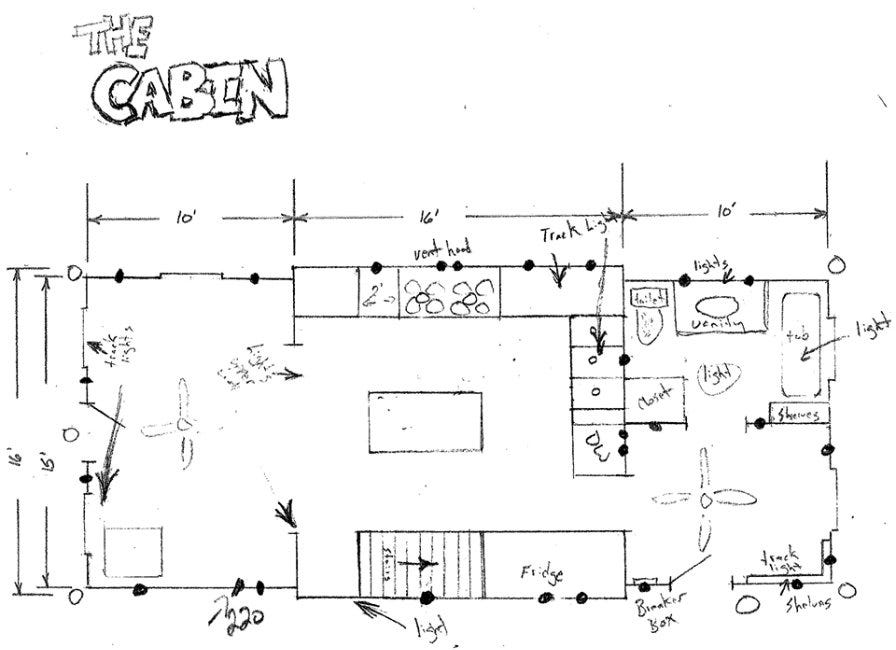

So one night I sketched out a floor plan on a piece of paper and started searching for trees. A few months before we made the decision to build, a wave of tornadoes blew through Arkansas and caused a swath of damage across the state. Part of that damage was in the Ozark National Forest about an hour north of the farm where the storm had blown over about 50 mature yellow pines. When I called the forest service, they offered me a salvage permit to log the trees. And over the course of a month I logged out the timber with nothing more than a chainsaw, a tractor and a utility trailer.
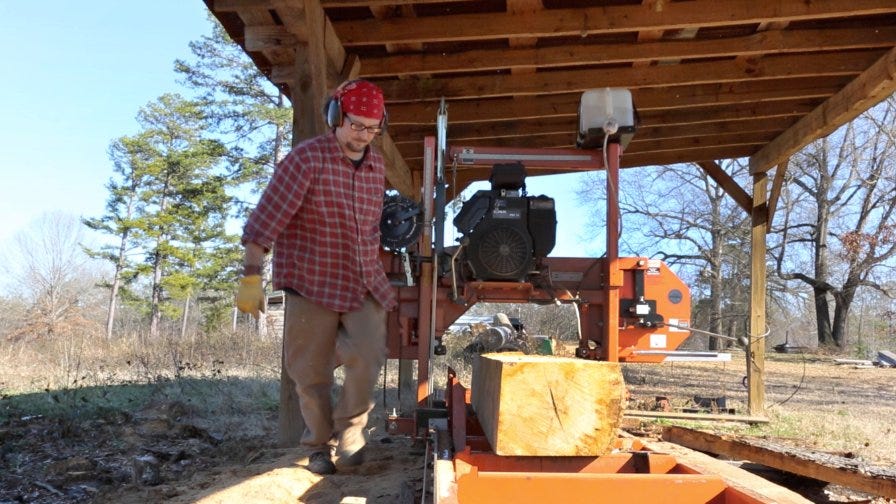

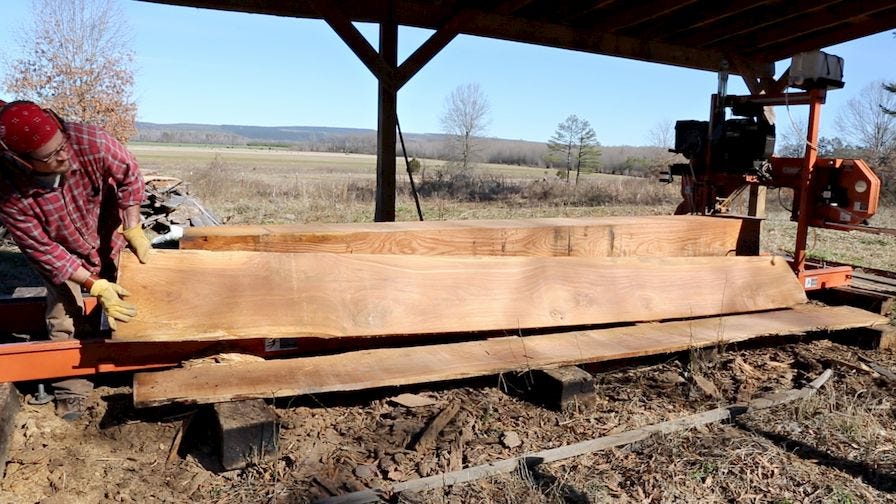

Then during what seemed like one of the hottest Arkansas summers in history, I cranked up the LT15 and began milling up the pine into lumber and 6” X 12” logs. It was over the course of the next four years, of working weekends and evenings and cutting out all the unessential expenses in our lives that the pile of pine logs became an 800-square foot log cabin. And when the last nail was driven, it was ours. Apart from some plywood, every stick of lumber in that cabin was milled by me.


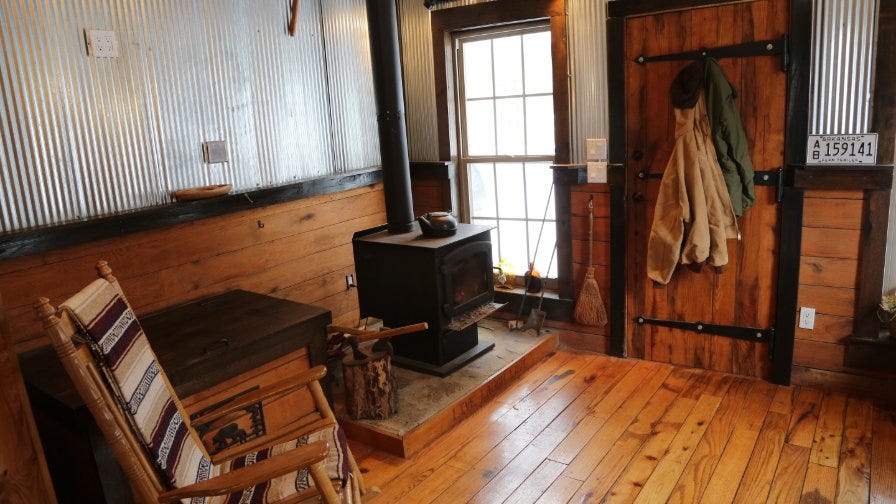

I get asked fairly often where I learned to build a log cabin and the truth is that’s the wrong question. The knowledge of building the thing isn’t the hard part. You learn as you go. The hard part is getting over inertia. Newton’s first law of motion says that an object at rest will stay at rest unless acted upon by another force. That cabin wasn’t going to build itself.
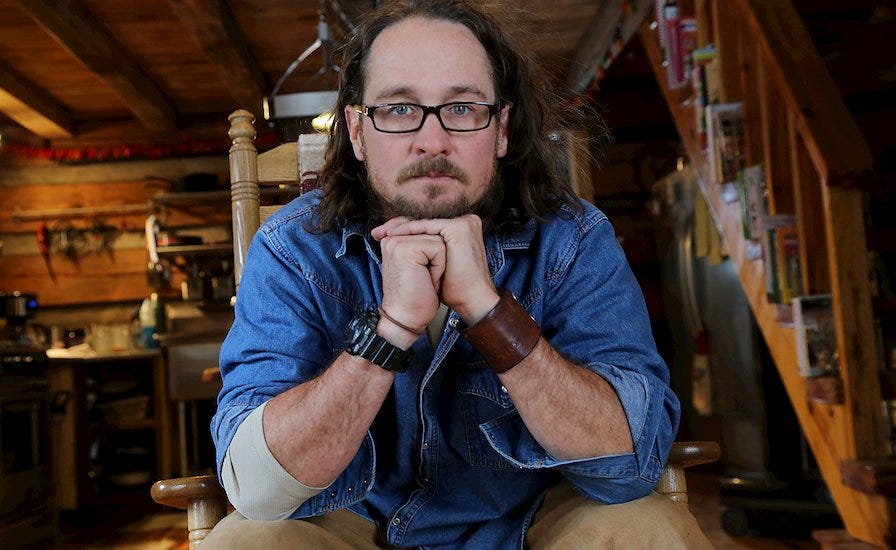

The hardest part was getting up one day and actually doing something tangible to make it a reality. After that the hard part was dedicating what little free time I had to the cabin and learning to be okay with slow progress. It was cutting out things we used to consider necessities and working part time jobs to pay for materials. It was the cold weekends I slept in the cabin without windows or heat so I could save gas money and time driving back and forth. And it was stepping away from it when I was getting tired and sloppy. But then one day it was finished and as much as the landscape had changed, so had I. For the better.
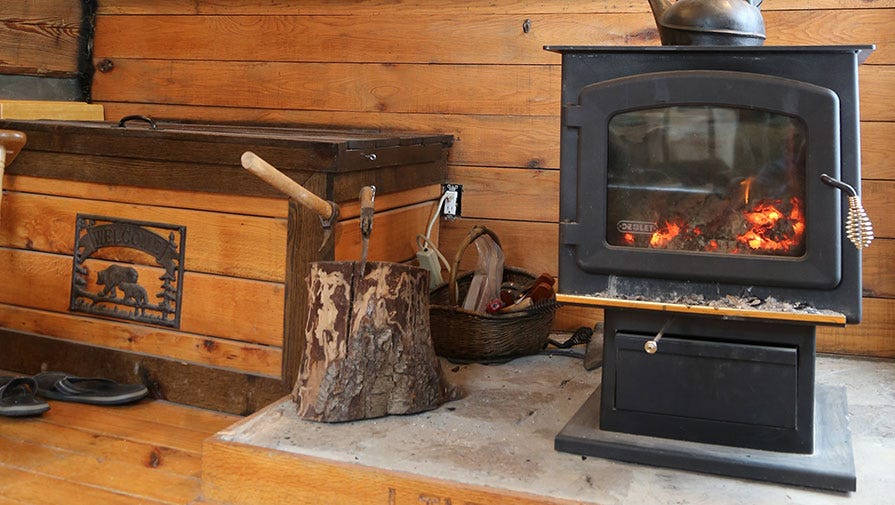



I owe a lot to that LT15. Of all the tools at my disposal, it proved one of the most valuable at making my goal a reality. While not a big mill, it’s a workhorse. It chewed through every log I offered, no matter how hard, and never failed me. It isn’t complicated and it’s willing to work all day every day. And that’s the way I like it. And years later it’s still going strong as I mill lumber for barns, sheds, fences and other projects around the farm. That mill has saved me thousands of dollars in lumber. And so we continue to build our world. A little at a time as money and time allow. Each day a little closer to being completely self-sufficient. Each day building the life that we want. A deliberate life. A good life.
Connect with Billy and Cabin People on Facebook and YouTube, or visit www.CabinPeople.com.
“I went to the woods because I wished to live deliberately, to front only the essential facts of life, and see if I could not learn what it had to teach, and not, when I came to die, discover that I had not lived.” - Henry David Thoreau
The world is still dark when I wake. There is only the faintest hint of red on the eastern horizon as I flip on the lights of the cabin. It’s cold outside. As daylight begins to emerge, the greyness of early morning is reflected on the frost that covers our world. I slowly make my way down the stairs to add wood to the stove and pour myself a cup of coffee. My wife, Paula, is already up getting ready for school with bacon and eggs frying on the stove. After breakfast, we say our goodbyes as she heads off to teach her students and I walk down the hill to the shed and get on my tractor to go feed cows before I also head to my day job.
By now, the sun is breaking over the horizon and a plume of smoke is rising from the flue. The world is waking up. The horses are kicking their feed buckets and nickering for my attention. The heifers, seeing me out, start working their way to their feed troughs. On most mornings, I can see a dozen or so deer grazing in our hay field below the cabin. I set my coffee mug into its holder as I crank the tractor to life.
This is our life. It’s a good life. It’s a life we worked hard to have. The financial crash of 2008 hit a little too close to home. Watching so many others lose their life savings and homes as the result of a financial system out of control, we realized how close we came to being part of that statistic.It was then that we decided we would choose a different life. A simple life. A good life. We wanted to invest in things that matter and get away from the things that offered an illusion of security and nothing more. We wanted to be self-reliant. But money was tight. We had a couple of things going for us.

A year earlier, I had purchased a Wood-Mizer LT15 sawmill to mill lumber for repairs around the farm and we had a plot of land that was mortgage free. But with it feeling like the world was falling apart around us, we decided to do what it takes to build a log cabin from scratch.
1. It had to be built completely debt free.
2. There would be no deadline on when it would be finished.
3. It had to be built strong enough to endure generations of use.
4. It had to be beautiful.

So one night I sketched out a floor plan on a piece of paper and started searching for trees. A few months before we made the decision to build, a wave of tornadoes blew through Arkansas and caused a swath of damage across the state. Part of that damage was in the Ozark National Forest about an hour north of the farm where the storm had blown over about 50 mature yellow pines. When I called the forest service, they offered me a salvage permit to log the trees. And over the course of a month I logged out the timber with nothing more than a chainsaw, a tractor and a utility trailer.


Then during what seemed like one of the hottest Arkansas summers in history, I cranked up the LT15 and began milling up the pine into lumber and 6” X 12” logs. It was over the course of the next four years, of working weekends and evenings and cutting out all the unessential expenses in our lives that the pile of pine logs became an 800-square foot log cabin. And when the last nail was driven, it was ours. Apart from some plywood, every stick of lumber in that cabin was milled by me.
I get asked fairly often where I learned to build a log cabin and the truth is that’s the wrong question. The knowledge of building the thing isn’t the hard part. You learn as you go. The hard part is getting over inertia. Newton’s first law of motion says that an object at rest will stay at rest unless acted upon by another force. That cabin wasn’t going to build itself.

The hardest part was getting up one day and actually doing something tangible to make it a reality. After that the hard part was dedicating what little free time I had to the cabin and learning to be okay with slow progress. It was cutting out things we used to consider necessities and working part time jobs to pay for materials. It was the cold weekends I slept in the cabin without windows or heat so I could save gas money and time driving back and forth. And it was stepping away from it when I was getting tired and sloppy. But then one day it was finished and as much as the landscape had changed, so had I. For the better.
I owe a lot to that LT15. Of all the tools at my disposal, it proved one of the most valuable at making my goal a reality. While not a big mill, it’s a workhorse. It chewed through every log I offered, no matter how hard, and never failed me. It isn’t complicated and it’s willing to work all day every day. And that’s the way I like it. And years later it’s still going strong as I mill lumber for barns, sheds, fences and other projects around the farm. That mill has saved me thousands of dollars in lumber. And so we continue to build our world. A little at a time as money and time allow. Each day a little closer to being completely self-sufficient. Each day building the life that we want. A deliberate life. A good life.
Connect with Billy and Cabin People on Facebook and YouTube, or visit www.CabinPeople.com.





